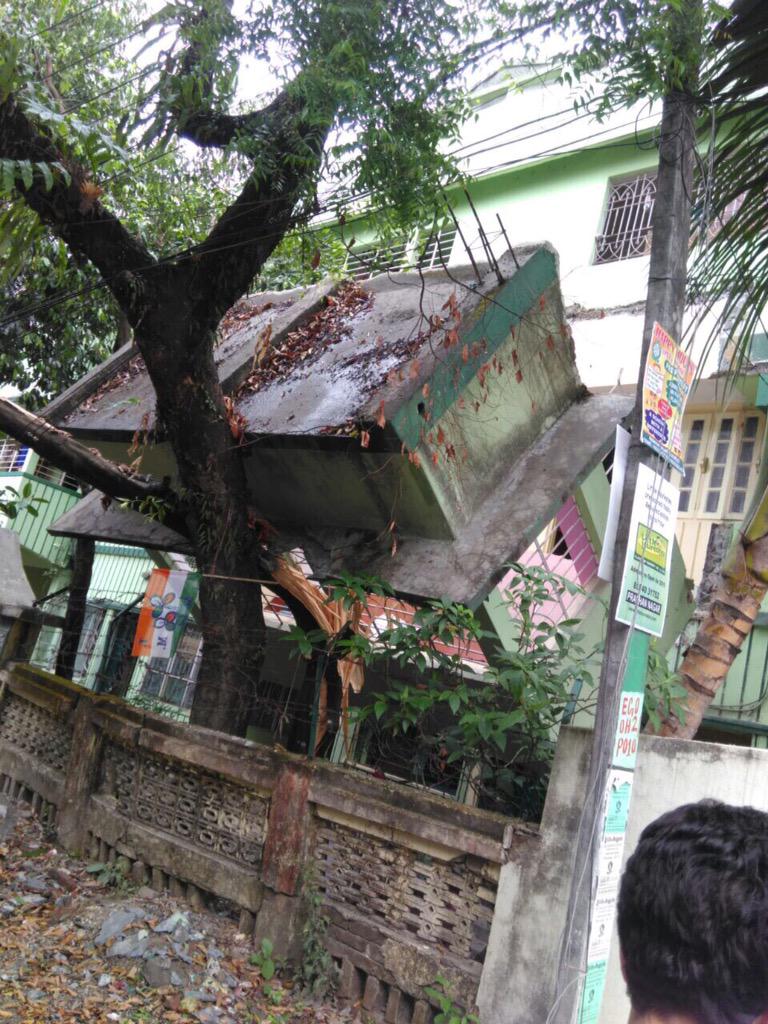
A powerful, 7.8-magnitude earthquake shook Nepal's capital and the densely populated Kathmandu Valley before noon Saturday, collapsing houses and leveling centuries-old temples in the worst temblor in the Himalayan nation in over 80 years. (April 25) AP More than 700 people were killed Saturday in a powerful earthquake that rocked the Himalayan nation of Nepal, leveling homes and centuries-old temples and triggering avalanches, according to the Ministry of Home Affairs. At least 688 people were confirmed dead in Nepal, according to the police. Another 20 were killed in India, six in Tibet and two in Bangladesh. Two Chinese citizens died at the Nepal-China border. Given the scale of the destruction, the death toll is almost certain to rise, said Home Ministry official Laxmi Dhakal.
The quake, which was felt as far away as Lahore in Pakistan, Lhasa in Tibet, and in Dhaka, Bangladesh, was followed by some 15 aftershocks, including one registered as magnitude 6.6. Pushpa Das, a laborer, ran from the house when the first quake struck but could not escape a collapsing wall that injured his arm.
"It was very scary. The earth was moving … I am waiting for treatment but the (hospital) staff is overwhelmed," he said, gingerly holding his right arm with his left hand. As he spoke dozens of more people showed up with injuries, mostly from falling bricks. The initial death toll was issued by Nepal's Ministry of Home Affairs, CNN reports, and appeared certain to rise as authorities gathered information from hard to reach areas.
India's Prime Minister Narendra Modi called a meeting of top government officials to review the damage and disaster preparedness in parts of India that felt strong tremors. Pakistan Prime Minister Nawaz Sharif offered "all possible help" that Nepal may need. A senior mountaineering guide, Ang Tshering, said an avalanche swept the face of Mt. Everest after the earthquake, and government officials said at least 30 people were injured. Tshering of the Nepal Mountaineering Association said the avalanche apparently occurred between the Khumbu Icefall, a rugged area of collapsed ice and snow, and the base camp where most climbing expeditions have their main camps. While details are unclear with communications limited to the Everest region, Tshering said the avalanche did not appear to have hit the base camp itself. As the ground began to shake, several buildings collapsed in the center of the capital, the ancient Old Kathmandu, including centuries-old temples and towers, said resident Prachanda Sual. Among them was the Dharahara Tower, one of Kathmandu's landmarks built by Nepal's royal rulers in the 1800s and a UNESCO-recognized historical monument. It was reduced to rubble and there were reports of people trapped underneath. The Kathmandu Valley is densely populated with nearly 2.5 million people, and the quality of buildings is often poor. Dhany Osman, an editor with The Straits Times of Singapore said he was at Kathmandu's Tribhuvan International Airport when the quake struck. "As bits of the ceiling began to fall, passengers who were waiting for their flights began to panic and started running out of the terminal, with some tripping over each other," he writes. "Despite the nearest exit door being just 10 (yards) away, a group of Nepali men smashed open a glass panel and climbed out of it. I tried telling people around me to calm down but they kept shoving each other to get out." While the extent of the damage and the scale of the disaster are yet to be ascertained, the quake will likely put a huge strain on the resources of this poor country best known for Everest, the highest mountain in the world. The economy of Nepal, a nation of 27.8 million people, is heavily dependent on tourism, principally trekking and Himalayan mountain climbing. Robin Trygg, a climber, was in a base camp on the Cho Oyu mountain at an altitude of 5,600 meters (18,480 feet) when he felt the quake. "We were sitting in the tent and drinking tea when all of a sudden the earth began shaking. We didn't understand what happened," he told the Swedish news agency TT by telephone. In Kathmandu, dozens of people were gathered in the parking lot of Norvic International Hospital, where thin mattresses were spread on the ground for patients rushed outside, some wearing hospital pajamas. A woman with a bandage on her head sat in a set of chairs pulled from the hospital waiting room. Doctors and nurses had hooked up some patients to IV drops in the parking lot, or were giving people oxygen. The U.S. Geological Survey revised the magnitude from 7.5 to 7.9 but then lowered it to 7.8. It said the quake hit at 11:56 a.m. local time (0611 GMT) at Lamjung. It was the largest shallow quake since the 8.2 temblor off the coast of Chile on April 1, 2014. An earthquake's power increases by 10 times with each increase in the number of its scale. A magnitude 7 quake is capable of widespread and heavy damage while an 8 magnitude quake can cause tremendous damage. This means Saturday's earthquake — the same magnitude as the one that hit San Francisco in 1906 — was 22 times more powerful than the 7.0 quake that devastated Haiti in 2010. A Swedish woman, Jenny Adhikari, who lives in Nepal, told the Swedish newspaper Aftonbladet that she was riding a bus in the town of Melamchi when the earth began to move. "A huge stone crashed only about 20 (yards) from the bus," she was quoted as saying. "All the houses around me have tumbled down. I think there are lot of people who have died," she told the newspaper by telephone. Melamchi is about 30 miles northeast of Kathmandu. Nepal suffered its worst recorded earthquake in 1934, which measured 8.0 and all but destroyed the cities of Kathmandu, Bhaktapur and Patan. Contributing Associated Press


No comments:
Post a Comment